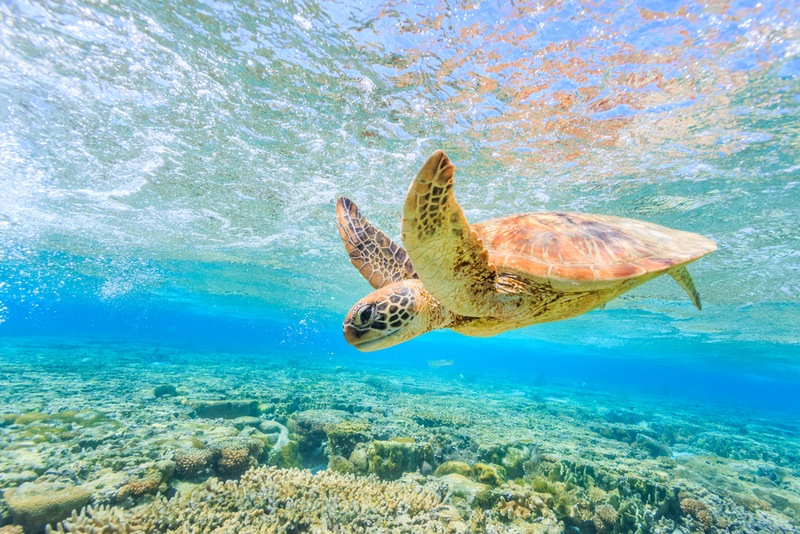
Florida's annual sea turtle hatching season is almost here! The coming months will witness thousands of turtles coming ashore in the dead of night to lay their eggs along the sunshine state's sandy beaches with mass hatchings occurring later in the year. Many of the world’s sea turtle species are either endangered or threatened and most are protected by local, state, and federal laws. There are established procedures designed to protect these fragile creatures while allowing spectators to observe this beautiful cycle of life from a safe distance. Since 90% of sea turtles nest in Florida between the months of March and October when tourism is at its height, it’s crucial that we all follow some simple beach rules to help ensure nothing interferes with the mother's journey ashore to lay her eggs, that her nest is protected, and that the baby turtles make it safely to the ocean after they hatch. The following are the best ways to ensure that this year’s nesting season goes off without a hitch!
The less light, the better
Freshly hatched turtles emerge from their eggs and dig their way to the surface of the sand, where they rely on natural light to find their way to the ocean. Without any distractions, a baby turtle’s footprints will track in a straight line to the water. However, artificial lighting from residential and commercial beachfront properties, personal vehicles, and handheld devices can easily disorient the newborns and accidentally lead them away from the safety of the ocean and towards far less hospitable locations including swimming pools or even the street! If you live on or near the beach, please close your blinds at night and shield any outdoor lights. Keeping the beach dark is the best way to help mother turtles find a nesting spot and baby turtles find their way to the ocean!
Keep the sand flat
Another way to make the journey of both mother and baby turtles alike as easy as possible is by knocking down sandcastles and removing all beach accessories such as umbrellas and chairs while also filling in any deep holes dug into the sand. The hatchlings can become entrapped within any holes or get diverted by any obstacles in their way to the water and the mothers can also struggle to find a nesting spot when impeded.
Keep your distance
If you’re lucky enough to see one (or hundreds) of these adorable critters making their trek across the sand, please make sure to keep a safe distance of at least 30 feet. Minimize your noise level as much as possible, any loud sounds can be enough to distract the turtles and steer them off course. It is also believed that the journey of the hatchlings from nest to water allows these turtles to leave a unique imprint on their beach that can otherwise be tarnished by human interference. If you needed any more reason to not get too close to the turtles, they are protected under federal and state laws!
Join a sea turtle walk
When in doubt, leave it to a professional! Join 20 to 40 other people in a search led by expert guides to quietly find a nesting area and observe a mother turtle dig a hole, bury her eggs, and then cover them up before returning to the ocean. These walks always begin with an informative session while scouts go and find nesting turtles for the group to watch. The egg-laying process can take 30 to 60 minutes while you and your group quietly spectate. However, every season differs and there’s no guarantee that you’ll see a turtle.